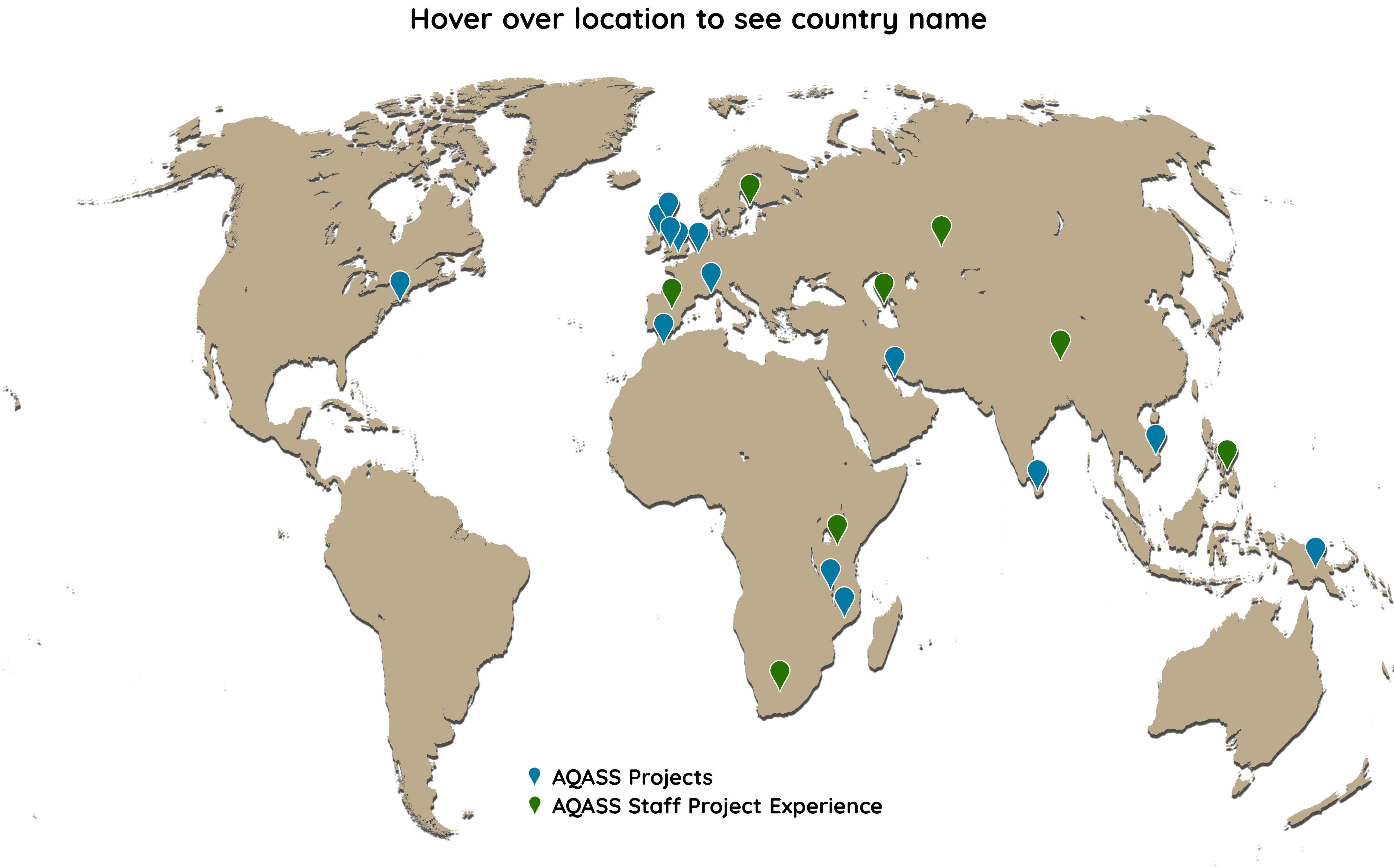

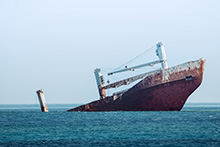 AQASS were approached to undertake a data and environmental impact pathway study and assessment for a major shipping pollution incident off the Sri Lankan coast. The study considered all readily available academic and grey literature data on the incident itself, plus reporting and papers that assisted in characterizing the region and impact areas.
The study assessed the value of data collected in relation to assessment of marine ecosystem impacts and recommended future options and resources to ensure that data are fit for purpose in assessing long term ecosystem change and resultant potential human related outcomes of the incident.
AQASS was able to synthesize habitat characterizing data, plus physical environmental variables which enabled an assessment of pollutant pathways and resources necessary to assess longer term change. Further to this, recommendations were made for future sampling regimes and suitable level temporal ecological impact studies.
AQASS were approached to undertake a data and environmental impact pathway study and assessment for a major shipping pollution incident off the Sri Lankan coast. The study considered all readily available academic and grey literature data on the incident itself, plus reporting and papers that assisted in characterizing the region and impact areas.
The study assessed the value of data collected in relation to assessment of marine ecosystem impacts and recommended future options and resources to ensure that data are fit for purpose in assessing long term ecosystem change and resultant potential human related outcomes of the incident.
AQASS was able to synthesize habitat characterizing data, plus physical environmental variables which enabled an assessment of pollutant pathways and resources necessary to assess longer term change. Further to this, recommendations were made for future sampling regimes and suitable level temporal ecological impact studies.
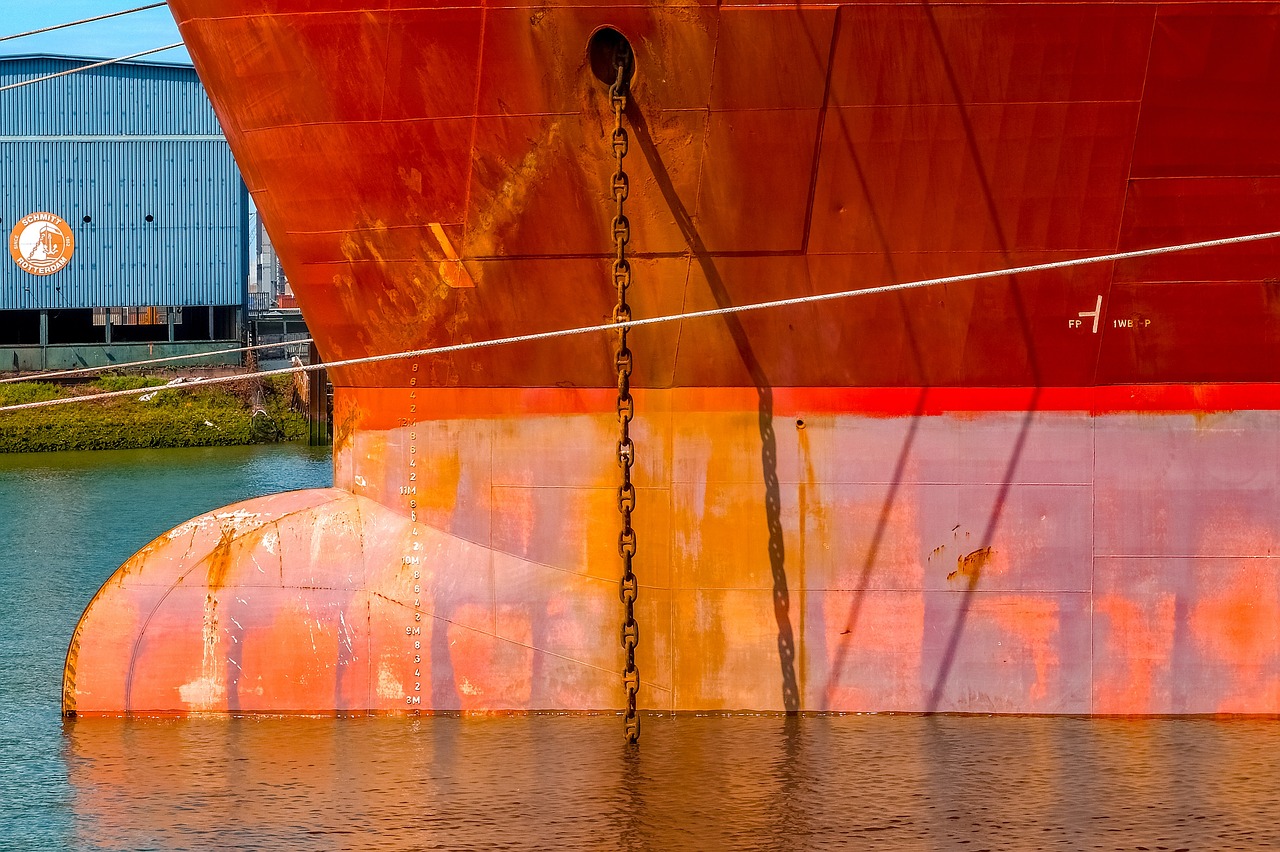 AQASS is undertaking a requested research review of silicone foul release coatings. These antifoul paints are based on a “slippery surface” to inhibit primary settlement and significant attachment by fouling organisms. As they are listed as non-toxic, they are seen as an alternate to “traditional” toxic coatings which may contain biocides to inhibit algal attachment, or metal, usually copper, to repel settling organisms; copper is most toxic to fouling organisms in the dissolved phase. Whilst this appears an ideal, some concerns have been raised by researchers regarding the formulation of silicone FRC’s with questions raised on the use of certain catalysts in their production plus comments made on the release of silicone oils. Furthermore, the validity of the coating in terms of robustness has been previously questioned, with the weak attachment of the paint leading to damaged sloughing and leaving paint flakes coming off of hulls. We have been asked to undertake the review to update current understanding in a concise document.
AQASS is undertaking a requested research review of silicone foul release coatings. These antifoul paints are based on a “slippery surface” to inhibit primary settlement and significant attachment by fouling organisms. As they are listed as non-toxic, they are seen as an alternate to “traditional” toxic coatings which may contain biocides to inhibit algal attachment, or metal, usually copper, to repel settling organisms; copper is most toxic to fouling organisms in the dissolved phase. Whilst this appears an ideal, some concerns have been raised by researchers regarding the formulation of silicone FRC’s with questions raised on the use of certain catalysts in their production plus comments made on the release of silicone oils. Furthermore, the validity of the coating in terms of robustness has been previously questioned, with the weak attachment of the paint leading to damaged sloughing and leaving paint flakes coming off of hulls. We have been asked to undertake the review to update current understanding in a concise document.
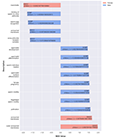 Collaboration with UK university on data analysis, interpretation and reporting for long term monitoring of organic pollutants and specifically contaminants of emerging concern (CEC) data and effects at the molecular level leading to practical management of pollutants for important conservation area within an intertidal and estuarine system along the south coast of the UK. Funding is through the EU Interreg Channel Project.
Collaboration with UK university on data analysis, interpretation and reporting for long term monitoring of organic pollutants and specifically contaminants of emerging concern (CEC) data and effects at the molecular level leading to practical management of pollutants for important conservation area within an intertidal and estuarine system along the south coast of the UK. Funding is through the EU Interreg Channel Project.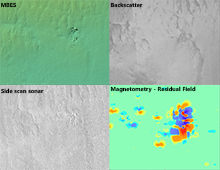 Assisting with GIS integration and interpretation of very high resolution geophysical survey data covering over a 1,000 km2 for major wind farm development project along the east coast of the USA. Data includes side scan sonar (SSS), multibeam echo sounder (MBES), backscatter, and magnetometry. Automation of integration and interpretation were conducted using bespoke Python scripting.
Assisting with GIS integration and interpretation of very high resolution geophysical survey data covering over a 1,000 km2 for major wind farm development project along the east coast of the USA. Data includes side scan sonar (SSS), multibeam echo sounder (MBES), backscatter, and magnetometry. Automation of integration and interpretation were conducted using bespoke Python scripting.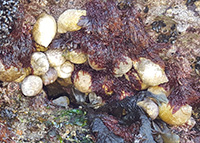 Site surveys and reporting for marine pollution study. Species abundance and morphology investigation; data fed into report to assess impacts and provide appropriate evidence for legal proceedings.
Site surveys and reporting for marine pollution study. Species abundance and morphology investigation; data fed into report to assess impacts and provide appropriate evidence for legal proceedings. Multispectral drone, LiDAR data and physical habitat survey for carbon holding potential and habitat status for a remote UK estuary location. A long trip to a remote location, and the opportunity to stand in the middle of a large UK estuary with not a sole in site bar the survey team. The data captured were processed, analysed and combined with survey results from the habitat study and sediment samples taken during the same field visit.
Multispectral drone, LiDAR data and physical habitat survey for carbon holding potential and habitat status for a remote UK estuary location. A long trip to a remote location, and the opportunity to stand in the middle of a large UK estuary with not a sole in site bar the survey team. The data captured were processed, analysed and combined with survey results from the habitat study and sediment samples taken during the same field visit. Options for enhancing marine biodiversity through habitat restoration and enhancement for a Mediterranean nation. Included review of studies and literature and examining anthropogenic impacts on Mediterranean Sea from pollution, lack of native species and habitat loss. A site visit and survey from the seaward side. Recommendations for habitat enhancement including sea defences, marine environmental improvement (pollution reduction) and possible habitat restoration and creation. Potential research areas and future student collaboration opportunities also recommended and highlighted.
Options for enhancing marine biodiversity through habitat restoration and enhancement for a Mediterranean nation. Included review of studies and literature and examining anthropogenic impacts on Mediterranean Sea from pollution, lack of native species and habitat loss. A site visit and survey from the seaward side. Recommendations for habitat enhancement including sea defences, marine environmental improvement (pollution reduction) and possible habitat restoration and creation. Potential research areas and future student collaboration opportunities also recommended and highlighted. AQASS undertook a desktop study considering the difficulties of environmentally and ecologically sound disposal of fibre re-inforced plastic boats.
AQASS undertook a desktop study considering the difficulties of environmentally and ecologically sound disposal of fibre re-inforced plastic boats. AQASS worked with MarineSpace Ltd providing specialist marine ecology and physical habitat assessment analysis and reporting for an Environmental Impact Assessment (EIA) related to mining activity on the northern Mozambique coast. The project aimed to assess habitat status and vulnerability to enable future management of complex estuarine habitat and species against area needs.
AQASS worked with MarineSpace Ltd providing specialist marine ecology and physical habitat assessment analysis and reporting for an Environmental Impact Assessment (EIA) related to mining activity on the northern Mozambique coast. The project aimed to assess habitat status and vulnerability to enable future management of complex estuarine habitat and species against area needs.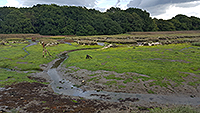 AQASS provided support and ecological / environmental guidance to Lymington Technical Services for a novel approach to the beneficial use of dredge spoil for saltmarsh and intertidal mudflat habitat restoration in the River Hamble, Hampshire. In addition to habitat restoration, the enhancement of related ecosystem services (primarily passive coastal protection) is a potential outcome that is coupled with drives to enhance valuable intertidal habitat for feeding bird species and benthic and pelagic fauna.
AQASS provided support and ecological / environmental guidance to Lymington Technical Services for a novel approach to the beneficial use of dredge spoil for saltmarsh and intertidal mudflat habitat restoration in the River Hamble, Hampshire. In addition to habitat restoration, the enhancement of related ecosystem services (primarily passive coastal protection) is a potential outcome that is coupled with drives to enhance valuable intertidal habitat for feeding bird species and benthic and pelagic fauna.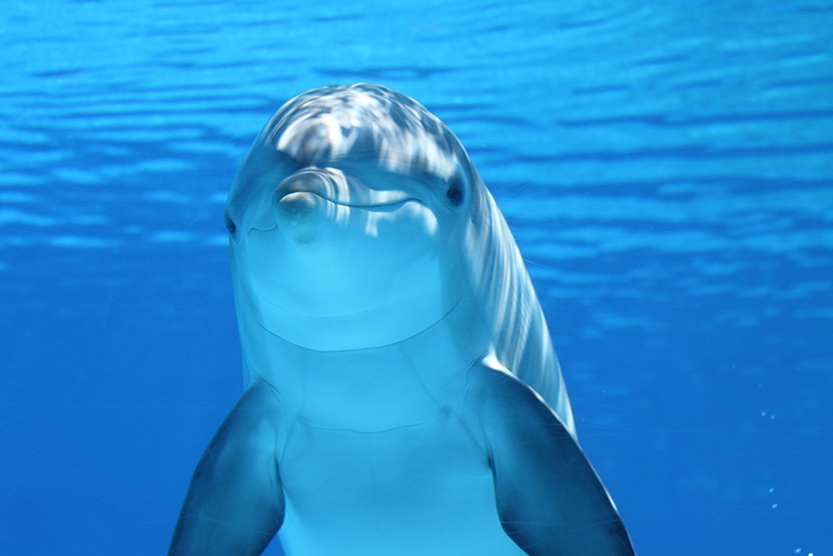 AQASS
undertook a desktop study for Fugro GB Marine considering the Persian
Gulf, in the region of Iran, Qatar and Bahrain. This provided an
environmental baseline of ecological assets and a broad ranging data
review identifying data gaps and areas where data sharing may supplant
knowledge shortages. The study highlighted regional and local human
pressures on the marine environment and, with specific consideration of
ecosystem services, recommended approaches to survey activities to
ensure best practice and impact minimisation.
AQASS
undertook a desktop study for Fugro GB Marine considering the Persian
Gulf, in the region of Iran, Qatar and Bahrain. This provided an
environmental baseline of ecological assets and a broad ranging data
review identifying data gaps and areas where data sharing may supplant
knowledge shortages. The study highlighted regional and local human
pressures on the marine environment and, with specific consideration of
ecosystem services, recommended approaches to survey activities to
ensure best practice and impact minimisation.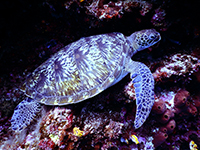 AQASS
provided support to Fugro GB Marine for an environmental / ecological
study considering a remote offshore area of Papua New Guinea. A desktop
review and data assessment was undertaken to highlight knowledge gaps in
the region and to identify potential sensitivities and areas for more
research. The study was used to guide refine a field survey and
considered biotic and abiotic factors and relation of subsequent work in
the region to provisioning and cultural ecosystem services.
AQASS
provided support to Fugro GB Marine for an environmental / ecological
study considering a remote offshore area of Papua New Guinea. A desktop
review and data assessment was undertaken to highlight knowledge gaps in
the region and to identify potential sensitivities and areas for more
research. The study was used to guide refine a field survey and
considered biotic and abiotic factors and relation of subsequent work in
the region to provisioning and cultural ecosystem services. A long term and complex spatial and temporal data analysis project investigating water abstraction patterns and potential influences on water quality and fish migration patterns through a UK estuary into an internationally recognised river system. Assessment of temporal and spatial data sets and recording methods to ensure data continuity and to consider patterns of environmental change and possible implications.
A long term and complex spatial and temporal data analysis project investigating water abstraction patterns and potential influences on water quality and fish migration patterns through a UK estuary into an internationally recognised river system. Assessment of temporal and spatial data sets and recording methods to ensure data continuity and to consider patterns of environmental change and possible implications.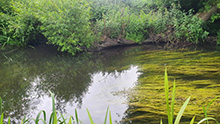 The project focussed on the design and permitting phase of four areas along the River Colne in North Watford, focussing on river and floodplain improvement opportunities. We assisted in project management and provision of technical advice, as well as topography and preliminary sediment surveys within and along the river corridor.
The project focussed on the design and permitting phase of four areas along the River Colne in North Watford, focussing on river and floodplain improvement opportunities. We assisted in project management and provision of technical advice, as well as topography and preliminary sediment surveys within and along the river corridor.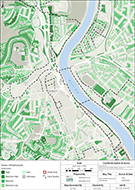 We assisted GIC, working in partnership with Natural Resources Wales (NRW), in mapping opportunities for more greenery in Newport City Centre. Asset maps were generated from existing mapped data and remotely sensed imagery. The study demonstrated a variety of green infrastructure (GI) opportunities and nature-based solutions within the heart of the city that maximise the social, cultural, environmental and economic benefits in line with the Well-being of Future Generations (Wales) Act 2015 and the well-being goals.
We assisted GIC, working in partnership with Natural Resources Wales (NRW), in mapping opportunities for more greenery in Newport City Centre. Asset maps were generated from existing mapped data and remotely sensed imagery. The study demonstrated a variety of green infrastructure (GI) opportunities and nature-based solutions within the heart of the city that maximise the social, cultural, environmental and economic benefits in line with the Well-being of Future Generations (Wales) Act 2015 and the well-being goals.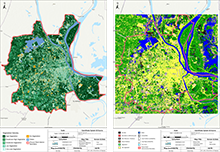 A departure from our marine / freshwater water based norm; undertaking spatial assessment of green infrastructure areas in Phnom Penh using remotely sensed satellite imagery (Sentinel-2). Imagery were classified using both the Normalised Difference Vegetation Index (NDVI), which is an index for quantifying green vegetation and a measure of the state of vegetation health, and Enhanced Vegetation Index (EVI), which correct for soil background signals and atmospheric effects and especially useful in areas with dense canopy. Vegetation density area was calculated for both indeces as comparison. Data were being used to assess urban green space (UGS) and green infrastructure (GI) area as a baseline for future growth in GI. Not our usual field, but interesting and satisfying.
A departure from our marine / freshwater water based norm; undertaking spatial assessment of green infrastructure areas in Phnom Penh using remotely sensed satellite imagery (Sentinel-2). Imagery were classified using both the Normalised Difference Vegetation Index (NDVI), which is an index for quantifying green vegetation and a measure of the state of vegetation health, and Enhanced Vegetation Index (EVI), which correct for soil background signals and atmospheric effects and especially useful in areas with dense canopy. Vegetation density area was calculated for both indeces as comparison. Data were being used to assess urban green space (UGS) and green infrastructure (GI) area as a baseline for future growth in GI. Not our usual field, but interesting and satisfying.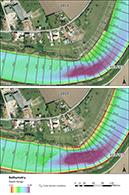 The study assessed the causes of erosion / scour at several sites along a section of the River Trent. As part of the work a strategic management plan was developed, including a programme of investigation to assist in the maintenance of the stretch of river, taking into account more nature-based, adaptive management options and solutions.
The study assessed the causes of erosion / scour at several sites along a section of the River Trent. As part of the work a strategic management plan was developed, including a programme of investigation to assist in the maintenance of the stretch of river, taking into account more nature-based, adaptive management options and solutions.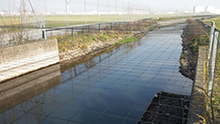 The proposal to create a third runway at Heathrow international airport is a project of national and international importance. The second major consultation phase to the general public runs from 18th June to 13th September.
The proposal to create a third runway at Heathrow international airport is a project of national and international importance. The second major consultation phase to the general public runs from 18th June to 13th September.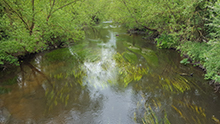 Thames Water are gathering data to embark on a set of projects / themes for “Smarter Water Catchments” to understand area needs and how working with key stakeholders can help build more effectively functioning river catchments. To assist in this process, a Natural Capital approach has been proposed for three pilot areas in which Thames Water are active, namely the Crane, Evenlode and Chess catchments. As part of the team, AQASS sees this as an exciting opportunity to engage in an integrated catchment management approach, working with Thames Water and other water managers in these catchments. An interactive web mapping application has been developed to visualise the baseline data gathered for this project.
Thames Water are gathering data to embark on a set of projects / themes for “Smarter Water Catchments” to understand area needs and how working with key stakeholders can help build more effectively functioning river catchments. To assist in this process, a Natural Capital approach has been proposed for three pilot areas in which Thames Water are active, namely the Crane, Evenlode and Chess catchments. As part of the team, AQASS sees this as an exciting opportunity to engage in an integrated catchment management approach, working with Thames Water and other water managers in these catchments. An interactive web mapping application has been developed to visualise the baseline data gathered for this project.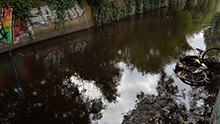 AQASS has been appointed to manage the feasibility and optioneering phase of the lower River Crane restoration / rehabilitation project in west London. This 3 km stretch of river at the bottom of the Crane catchment is an over-widened concrete channel, often hidden from view. The impacts of urbanisation on this stretch of river is very evident and has affected the physical structure, water quality, water quantity, geomorphology and its ability to support wildlife dramatically. This is a very ambitious project, that seeks to enhance a significant stretch of river in a very populated part of London and AQASS is pleased to be a team member at this stage of the scheme.
AQASS has been appointed to manage the feasibility and optioneering phase of the lower River Crane restoration / rehabilitation project in west London. This 3 km stretch of river at the bottom of the Crane catchment is an over-widened concrete channel, often hidden from view. The impacts of urbanisation on this stretch of river is very evident and has affected the physical structure, water quality, water quantity, geomorphology and its ability to support wildlife dramatically. This is a very ambitious project, that seeks to enhance a significant stretch of river in a very populated part of London and AQASS is pleased to be a team member at this stage of the scheme.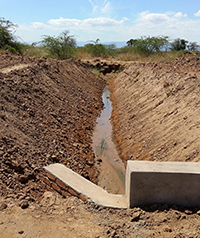 AQASS supported EOH Coastal and Environmental Services in the technical review of an Environmental and Social Due Diligence study considering water resource and water quality management and abstraction plans for a mixed agricultural business in Malawi. The review considered the sustainability of water efficiency proposals and suggested modifications and enhancement to data presentation to further ensure the sustainability of planned abstraction, particularly in relation to important wetlands and associated ecological communities.
AQASS supported EOH Coastal and Environmental Services in the technical review of an Environmental and Social Due Diligence study considering water resource and water quality management and abstraction plans for a mixed agricultural business in Malawi. The review considered the sustainability of water efficiency proposals and suggested modifications and enhancement to data presentation to further ensure the sustainability of planned abstraction, particularly in relation to important wetlands and associated ecological communities.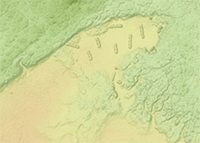 AQASS received a grant from the Natural Environment Group (NEG) of the Solent Forum to investigate the efficacy of passive sediment retention on a small scale saltmarsh restoration project along the River Hamble in 2020. Due to Covid19 restrictions, the project was delayed until 2021. The project included the installation of coir roll structures and using UAV technology to undertake monitoring over the course of 22 months.
AQASS received a grant from the Natural Environment Group (NEG) of the Solent Forum to investigate the efficacy of passive sediment retention on a small scale saltmarsh restoration project along the River Hamble in 2020. Due to Covid19 restrictions, the project was delayed until 2021. The project included the installation of coir roll structures and using UAV technology to undertake monitoring over the course of 22 months.For the Hong Kong Research Council and the National University of Singapore, AQASS undertakes academic research grant reviews considering marine ecological and pollution aspects. To date these have comprised: